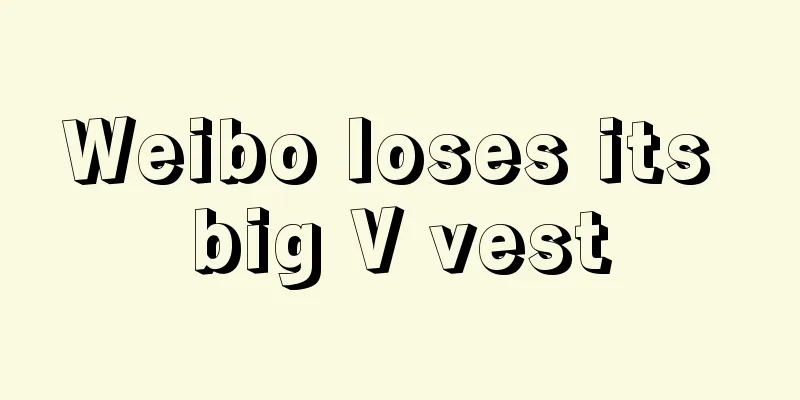The history of Coconut Tree Advertising: raking in 5 billion in 25 years, getting more and more excited with each fine

Marketing solves the “end” rather than the “root”. In a small shop on the street, a boy drinking coconut juice met a girl who also came to buy coconut juice. The two agreed to meet again next summer vacation. During the waiting period, the coconut juice bottles gradually filled the boy's room, becoming a kind of sustenance... This is the style of the first advertisement of the Coco Tree brand on CCTV in 1996, telling the story of young love in an aesthetic narrative form. This is very different from the straightforward and somewhat "explicit" beauty advertisement model of Coco Tree. When people turn their attention to the "Coconut Tree" again, it is not difficult to find that it has "caused trouble" again - in early May this year, Hainan Coconut Tree Group was fined 400,000 yuan by the market supervision department because its advertising contained terms that violated public order and good customs, such as "use coconut milk to rub breasts" and "there are few 'airports' beauties in the South Pacific", which violated relevant provisions of the "Advertising Law". After being fined, the Coconut Tree Group responded that it believed that reprinting the "Use coconut milk to rub breasts" on its official website was popular science education rather than commercial advertising. It expressed "one concern" and "two dissatisfactions" about being fined 400,000 yuan. At the same time, in the subsequent live broadcast, it arranged for the female anchor to dance in a sun-protective clothing, which again caused controversy. Is this "accepting the punishment but not the fault" operation the implementation of corporate culture or a deliberate marketing? Not only netizens, but also major media have different attitudes towards Coco Tree in recent years. According to statistics from the World Online Business, Coco Tree has been suspected of "skirting the edge" in advertising for 25 years, starting from the launch of the first advertisement "One cup a day, white and tender" in 1999. However, Coco Tree has maintained its unique advertising style and has gradually developed from a canning factory on the verge of bankruptcy to a large enterprise with annual sales of 5 billion yuan. If you want to know why Coco Tree keeps causing trouble despite being fined repeatedly, it is probably due to two reasons: first, the benefits of causing trouble are greater than the cost of being fined; second, Coco Tree’s marketing genes determine that it will stick to this path - in short, the first point is that it is unwilling to change, and the second point is that it cannot change. 1. Despite repeated fines, Coco Tree's revenue continues to riseIn 1999, a Coconut Tree advertisement featured beautiful women in swimsuits and the slogan "One cup a day, fair skin and tender skin", which greatly subverted the mainstream TV advertisements at the time. According to the observation of the World Online Business, this was the first "marginal" advertisement of Coconut Tree after Wang Guangxing, the head of the Coconut Tree Group, took over the Haikou Canning Factory. Taking this as a starting point, Coco Tree started its "edge-skirting" marketing style. Since 2006, Coco Tree has launched its advertising campaign with the theme of "Fair and tender skin, charming curves, drink Coco Tree coconut juice" on a larger scale. In the advertisement, a beautiful woman suddenly climbs a tree after playing beach volleyball and stretches her breasts exaggeratedly on the tree, and then appears with coconut juice products. In 2009, Coco Tree was still trying to "skirt the edge". Its new juice products were advertised on buses with slogans such as "Wives like their husbands to drink Coco Tree brand pomegranate juice" and "Papaya is plump and I am plump", which soon triggered complaints from citizens and was ordered to stop by relevant departments. This year, Coco Tree was also fined 1,000 yuan for its "skirting" advertising for the first time. However, data from Nanhai.com and Hainan Province's corporate development report show that in 2009, Coco Tree Group's revenue increased from 2.004 billion yuan in 2008 to 2.516 billion yuan. With the rapid increase in brand revenue and popularity, the 1,000 yuan fine did not change Coco Tree’s "borderline" advertising, but instead it went further and further away. Around 2013, the advertising slogans used by Coco Tree for its coconut milk products became even more explicit, with the posters even using the shocking slogan "Rub breasts with coconut, and drink more coconut milk every day to make breasts fuller"; in 2016, the Coco Tree Group selected a breast model champion to endorse its volcanic rock mineral water and customized "breast model bottles", which were considered vulgar marketing by consumers and were subsequently removed from the shelves. In 2019, Xu Dongdong, one of the spokespeople who had cooperated with Coco Tree for many years, said the familiar phrase "I have been drinking it since I was a child" in an advertisement. This year, Coco Tree was fined 200,000 yuan. At the same time, Coco Tree's revenue increased from 3.916 billion yuan in 2018 to 4.329 billion yuan in 2019. The national regulatory authorities began to notice the increasingly "free-spirited" Coco Tree, and the State Administration of Radio, Film and Television suspended some of Coco Tree's advertisements. From then on, the punished Coconut Tree began to frequently show an attitude of "accepting the punishment but not admitting the mistake". In 2021, Coco Tree promised in its executive recruitment advertisement that "you will have a car, a house, a high salary, and beautiful women and handsome men chasing you after you enroll in school." In the end, it was fined 400,000 yuan for obstructing social public order or violating good social customs. This year, the annual revenue of Coco Tree Group, which became more and more popular with the fines, reached 4.616 billion yuan. Chengde Lulu of Wanxiang Group showed a decline in revenue, and Yangyuan Drinks, the company behind Six Walnuts, saw a 7.41% decrease in total revenue compared to its peak in 2019. Coco Tree, which is still growing, has taken on the role of leader in China's plant protein beverage industry. After the advertisement was suspended recently, Coco Tree officially announced that if the group were to go bankrupt, the difficulties faced by 500,000 coconut farmers in Hainan would reappear. However, Hainan Province, as the main coconut producing area in China, produces nearly 200 million coconuts each year, but the consumption of coconuts in the Chinese market has already exceeded this amount. According to data from 2022, China consumes at least 2 billion coconuts a year. Coupled with the tourist effect of Hainan Island, Hainan's local coconuts are not worried about sales. The reality is that suppliers of coconut milk, coconut fruit and other products mainly rely on imported coconuts. In 2019, China's coconut imports rose to 36,406.1 tons, a threefold increase from 2015. Especially for Coconut Tree, according to public data, 90% to 95% of the coconut raw materials of the company are currently imported. 2. The torrent behind the first edgeThe change in Coco Tree's marketing style began in 1999. At that time, Coco Tree was undergoing transformation and restructuring into a group-based operation, and the Chinese beverage market was also caught in a turbulent period of rapid development. On the one hand, since 1993, Coca-Cola and Pepsi-Cola have successively acquired seven soda factories, including Beijing Beibingyang, Guangzhou Asia Soda, and Chongqing Tianfu Cola, and then put them on ice to expand the market for main products such as cola. This move was lamented by the public opinion at the time as "flooding seven armies." On the other hand, compared with the increasingly concentrated brands of carbonated beverages, other beverages also began to compete for the market: in 1996, Wahaha Group launched a milk-containing beverage for children, which later became popular all over the country, Wahaha AD calcium milk; in 1997, Chengde Lulu, which started with almond milk beverages, was listed on the Shenzhen Stock Exchange and became one of the first listed companies in the domestic beverage industry. It was known as a giant of plant protein beverages together with Coco Tree; at the end of the same year, the slogan "With Huiyuan, it's the New Year" spread across the country, and Zhu Xinli led Huiyuan Juice into a period of rapid development... The beverage market is changing, and there are many signals: First, the capital and operational strength of international beverage companies have indeed surprised Chinese beverage companies of the same period. Keeping their own track has become a prerequisite for many entrepreneurs to judge the "danger and opportunity" in the current situation. Second, marketing is both a brand’s soft power promotion and a hard power benchmark for capturing the market. From now on, brands need to pay more attention to advertising and marketing effects. Coco Tree also faced the common problems faced by the Chinese beverage industry. In just a few years, the Coco Breeze brand, also a Hainan company, rose rapidly with its mango juice, began to advertise frequently on CCTV and Hong Kong Satellite TV, and entered the overseas beverage market, which made Coco Tree feel the pressure from its competitors in the beverage industry. In 1996, Southern Weekend used a large page to record this fierce competition: Coco Tree suddenly promoted low-priced mango juice to seize the market, and Coco Breeze was not to be outdone and started selling low-priced coconut juice to compete with it. This "two coconuts dispute" has plunged both parties into a quagmire, and its influence has expanded from the business community to the political, legal, and economic and management circles. Wang Junyan, the first dean of Hainan University Law School and a former member of the National Committee of the Chinese People's Political Consultative Conference, traveled all the way from Hainan to Beijing to submit a proposal titled "Protecting Domestic Brands and Encouraging Citizens to Consume National Brand Products." In the proposal, he proposed that the government should strictly implement the Anti-Unfair Competition Law and strengthen supervision and investigation of unfair competition. But rationality often takes a detour for people who are deeply involved in the pros and cons. Soon, Yefeng ran into operational difficulties due to heavy investment in marketing and rapid expansion, while Yeshu used advertisements to more directly declare the advantages of coconut milk products. Under the influence of various factors, in 1999, Coco Tree boldly launched its first "borderline" advertisement, which also laid the foundation for its marketing style for 25 years to date. 3. To sell beverages, you need to know marketingIn addition to competition and benefits outweighing costs, Coco Tree is well aware of the importance of finding the traffic code through marketing, which is also closely related to Coco Tree's corporate growth history. On a winter weekend in 1982, Coca-Cola, which had just entered China, tried for the first time to promote Coca-Cola in major shopping malls in Beijing - if you bought a bottle of Coke, you could get a balloon or a pair of packaged chopsticks for free. For a time, consumers crowded the shopping mall. Behind the newspapers' competing reports, Coca-Cola's novel marketing model illuminated the Chinese beverage industry, which was still in the "land-enclosed operation" stage: it turned out that there was so much knowledge involved in the positioning, design, packaging, promotion and sales of a bottle of soda - this new idea later prompted Li Peiquan, the director of the Chongqing Beverage Factory, to create the homegrown Tianfu Cola, promoted the cooperation between Beijing Beibingyang Soda and PepsiCo, and also inspired the emergence of the national carbonated soda Guangdong Jianlibao five years later. At this time, in the southernmost part of China, Wang Guangxing, who was in his early 40s, happened to be transferred to the position of director of the Haikou Beverage Factory and joined the increasingly diversified Chinese beverage market. The first problem he encountered was marketing, which Chinese beverage companies were generally not familiar with. At that time, the factory had a backlog of more than 800 tons of unsold alcoholic beverages. As an artist by training, he designed the packaging himself and replaced the unsalable goods with festive red lantern-style packaging, which quickly opened up sales. Those who sell beverages need to understand marketing - this straightforward marketing concept was brought by him to the Haikou Cannery, the predecessor of the Coconut Group. In 1988, when the new coconut milk drink was successfully developed, Wang Guangxing hoped to promote the new drink nationwide, but encountered many difficulties in sales: due to the lack of popularity of the company and its products, many distributors were unwilling to take the risk of sales, so the salesmen of the Coconut Group often ran into obstacles. Coincidentally, Hainan Province was established in 1988, and regional publicity was at its peak. So Wang Guangxing led his staff to hang red banners with the words "If you haven't tasted the three delicious flavors of coconut, how can you know the sweetness of Hainan's mountains and waters" all over the busy roads, ports and stations in Haikou; he then strongly recommended Coco Tree Coconut Juice to relevant departments, and promoted it to become the "Hainan Province's founding beverage." The biggest turning point came in 1991. Wang Guangxing used the marketing action of holding a press conference in the Great Hall of the People in Beijing to promote this Hainan enterprise to the whole country, making it a household name in a short period of time and establishing the industry position of Coconut Tree in the plant protein beverage market. It is reported that distributors from all over the country came from afar with hundreds of thousands of yuan in cash and waited at the company's door to seek cooperation. In 1995, the Haikou Cannery, whose business was growing bigger and bigger, was officially restructured into the Coconut Group Co., Ltd. In 1999, Coco Tree was still engaged in marketing, but its style was tending towards the "edge", and since then the management team's philosophy has remained "consistent". In April this year, Zhao Bo, who had joined Coco Tree in 1990, resigned as chairman of the Coco Tree Group. He was elected general manager of the group through the group's first open election meeting in 2008 and served as general manager of the Coco Tree Group for 16 years. After that, he was replaced by He Chunling, who had served as party secretary and executive vice general manager of the Coco Tree Group. According to information, she served as the intern vice general manager of the Coco Tree Group in 2013, exercising the duties of deputy general manager of legislation, and is also a senior employee of Coco Tree. Although the chairman is a senior employee who is very familiar with the marketing concept of Coconut Tree, Wang Guangxing, who has a special meaning for the company, still has a considerable influence. This can be seen from the articles in the internal publication of Coconut Tree Group. According to 36Kr, "Coconut Tree People" has published articles such as "Inheriting the successful management experience of President Wang Guangxing" and "Coconut Tree, which has been losing money for 7 years and is about to go bankrupt, was saved by President Wang and all the money was earned by President Wang" in the past two years. In October 2022, the Coconut Tree live broadcast room became popular after it was launched on Douyin. Relying on beautiful women dancing to sell goods, it attracted 350,000 fans in 10 days, and the topic topped the hot search list. Subsequent related topics attracted 310 million views. The article published by "Coconut Tree People" claimed that the planning of this live broadcast was all done by Wang Guangxing, including "Douyin live broadcast background, dance, content, location, clothing, models and other content." Wang Guangxing's actual operation gave the trainees in the group a "unique lesson." Interestingly, He Chunling was once the editor-in-chief of Coconut Tree Man. Within Coco Tree, the concept of advertising style seems to be "passed down from generation to generation." 4. How will Coconut Tree face the next competition?Some consumers believe that Coco Tree is not afraid of punishment. According to the Hainan Province Enterprise Development Report and other materials, from 2005 to 2023, the sales of Coco Group have almost maintained a growth trend; in 2023, the total annual sales volume of Coco Group reached 700,000 tons, and its annual revenue exceeded 5 billion yuan for the first time. For Coco Tree, the 400,000 yuan fine imposed by the regulatory authorities seems insignificant and cannot deter the company from playing "edge ball". The company still uses such advertisements to attract attention and earn traffic. In January 2022, the Coco Tree Group even announced good news: "The successful response to the 2019 'I have been drinking it since I was a child' Coco Tree brand coconut juice advertising controversy and the 2021 Coco Tree Training Professional Managers College advertising enrollment controversy attracted the attention of more than 500 million netizens, which once again increased the brand awareness of Coco Tree." "The problem of coconut trees 'skirting the edge' that continues despite repeated bans is not a problem of having no law to rely on. To a certain extent, it is a comprehensive problem of social and market management," said Fu Linfang, director of Beijing Zhonglun Wende (Hangzhou) Law Firm. Article 9 of the Advertising Law stipulates that advertisements shall not disrupt social public order or violate good social customs; and Article 57 also points out that if there are relevant illegal acts, the market supervision and management department may order the advertiser to stop publishing advertisements and impose a fine of not less than RMB 200,000 and not more than RMB 1 million on the advertiser. In serious cases, the business license may be revoked, and the advertising review authority may revoke the advertising review approval document and not accept the advertising review application within one year. Fu Linfang told the World Online Business that according to relevant laws, if the fines have no warning effect, Coco Tree is still "skirting the edge" and there is still a risk of "being judged as a serious violation" and "the business license may be revoked according to law". "But considering the actual situation of taxation, employment, etc., it is difficult to deal with this problem in a 'one size fits all' way in reality." In the view of legal professionals, coconut milk products essentially have no direct connection with medical beauty effects such as breast enhancement and whitening. Leaving aside the product itself that consumers are most concerned about, and using exaggerated advertisements to highlight the efficacy or value that a bottle of beverage cannot achieve, this may be a waste of time for Coco Tree, which has a large loyal customer base and has inherited the coconut milk taste of many people's childhood. There is nothing wrong with beauties in swimsuits or handsome men working out. People's consumption aesthetics and behavioral acceptance will change with the times. In this regard, Coco Tree Advertising is ahead of the times. However, this does not mean that advertisements that are increasingly losing their sense of proportion can continue to generate public recognition while attracting attention and traffic. After all, for a company that plans to develop in the long term, marketing is not the essence, but the product is. Coconut Tree's core product, coconut juice, is in a "crack market" that large companies tend to ignore. As an early entrant, Coconut Tree has established a monopoly by virtue of its resource advantages and has continuously consolidated its moat; but later it exposed problems, such as difficulty in product innovation. Today, Coconut Tree has very few other new products that are widely known to the public, except for its signature Coconut Tree brand coconut juice. In recent years, more beverage brands named after coconuts have also emerged, and Coco Tree’s moat is in jeopardy. Brands such as Thailand’s if coconut water and Vita Coco have occupied an increasing share of e-commerce platforms, supermarkets and convenience store shelves because they embraced e-commerce and capital markets earlier; the offline fresh coconut water brand "Good Luck Coconut" also obtained three rounds of financing in a short period of time. Data shows that Coco Tree’s share of the plant protein beverage market has dropped from 50% at its peak to the current 26.3%. Coconut Tree has gained traffic now, but how to turn it into retention is the ultimate question that the brand needs to think about. After all, even if the fine is not high, consumers will eventually get tired of repeated marketing in the same way. Original title: A chronicle of Coco Tree’s “borderline” advertising: earning 5 billion in 25 years, and getting more excited with each fine. Text by Ye Chen. This article is written by the operator [天下网商], WeChat public account: [天下网商], originally created/authorized to be published on the operator. Any reproduction without permission is prohibited. The title image is from Unsplash, based on the CC0 protocol. |
<<: WPS Anxiety Can’t Be Solved by “Matryoshka”
>>: TEMU solves the "impossible triangle": low price, not low quality
Recommend
Private Domain Operation: Where do the 20 million private domain users of Liby, the No. 1 domestic daily chemical brand, come from?
In an increasingly competitive market environment,...
Pan-financial business is growing rapidly, and the contentization of Alipay is not a "false proposition"
As a payment software, Alipay has accelerated its ...
Yuanqi Forest: A year of paying tuition to giants
Yuanqi Forest, a beverage brand that once rose rap...
Earn a million a year or can’t even make a living, the online literature industry is up and down, and will it eventually flock to short dramas?
This article takes "Post-00s online writers e...
It’s time for “classical graphic and text self-media” to change
Known as "classical self-media", they ha...
Unveiling the secrets of leveraging marketing: value benefits, six common methods, and the "three degrees" that need to be paid attention to
In the brand communication strategy, leverage mark...
What is the return process of Amazon in the United States? What is the return policy?
After shopping on the Amazon platform, if we are n...
What did ClickUp do right to achieve 150 million ARR in 6 years in the red ocean market?
Mumu is a writer who started out as a software en...
In order to get a cross-dimensional date with an hourly wage of 500 yuan, beauties are flocking to Xiaohongshu and Xianyu to take orders
There is a dating method that is very popular amon...
Can individual business owners open Amazon stores? How to operate Amazon?
No matter which platform you open a store on, you ...
How much is the VAT fee for the European site? What is the VAT fee for Amazon's European site?
Now, when doing cross-border e-commerce in Europe,...
Master these 15 marketing strategies to make your sales soar
In a highly competitive business environment, effe...
Four questions about Xiaohongshu
This article analyzes the four major issues curren...
Luckin Coffee + Moutai, this does not require copywriting
Luckin Coffee and Moutai have teamed up! The combi...
How to check the logistics of eBay? What are the methods?
With the rapid development of e-commerce platforms...









